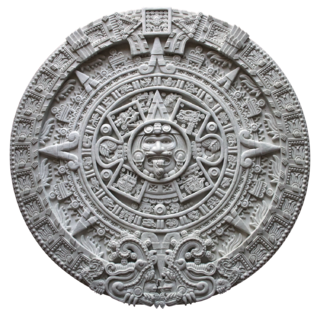
The Purépecha or Tarascans are a group of indigenous people centered in the northwestern region of Michoacán, Mexico, mainly in the area of the cities of Cherán and Pátzcuaro.

Mesoamerican languages are the languages indigenous to the Mesoamerican cultural area, which covers southern Mexico, all of Guatemala and Belize and parts of Honduras and El Salvador and Nicaragua. The area is characterized by extensive linguistic diversity containing several hundred different languages and seven major language families. Mesoamerica is also an area of high linguistic diffusion in that long-term interaction among speakers of different languages through several millennia has resulted in the convergence of certain linguistic traits across disparate language families. The Mesoamerican sprachbund is commonly referred to as the Mesoamerican Linguistic Area.

Kukulkan is the name of a Mesoamerican serpent deity. Prior to the Spanish Conquest of the Yucatán, Kukulkan was worshipped by the Yucatec Maya peoples of the Yucatán Peninsula, in what is now Mexico. The depiction of the Feathered Serpent is present in other cultures of Mesoamerica. Kukulkan is closely related to the deity Qʼuqʼumatz of the Kʼicheʼ people and to Quetzalcoatl of Aztec mythology. Little is known of the mythology of this Pre-Columbian era deity.
The Tarascan Plateau, also Purépecha Plateau, is a plateau and region in the Mexican state of Michoacán, in Southwestern Mexico
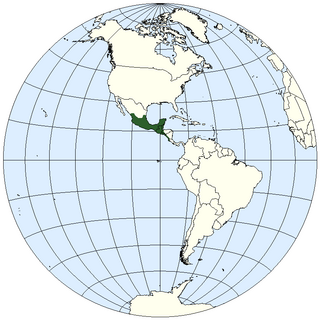
The geography of Mesoamerica describes the geographic features of Mesoamerica, a culture area in the Americas inhabited by complex indigenous pre-Columbian cultures exhibiting a suite of shared and common cultural characteristics. Several well-known Mesoamerican cultures include the Olmec, Teotihuacan, the Maya, the Aztec and the Purépecha. Mesoamerica is often subdivided in a number of ways. One common method, albeit a broad and general classification, is to distinguish between the highlands and lowlands. Another way is to subdivide the region into sub-areas that generally correlate to either culture areas or specific physiographic regions.
Tarascan or Tarasca is an exonym and the popular name for the Purépecha culture. It may refer to:

The Tarascan state was a state in pre-Columbian Mexico, roughly covering the geographic area of the present-day Mexican state of Michoacán, parts of Jalisco, and Guanajuato. At the time of the Spanish conquest, it was the second-largest state in Mesoamerica.
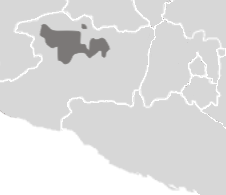
PurépechaAKAP'urhépecha[pʰuˈɽepet͡ʃa], often called Tarascan, is a language isolate or small language family that is spoken by 124,494 Purépecha in the highlands of Michoacán, Mexico.
Tepetlaoztoc or Tepetlaoxtoc is an archaeological site located in the Central Mexico plateau region of Mesoamerica, which was an Aztec/Nahua settlement during the Late Postclassic period of Mesoamerican chronology, with an occupancy continuing through the Colonial period. The site is situated in the Valley of Mexico, to the northeast of Texcoco.
Cholula was an important city of pre-Columbian Mesoamerica, dating back to at least the 2nd century BCE, with settlement as a village going back at least some thousand years earlier. The site of Cholula is just west of the modern city of Puebla and served as a trading outpost. Its immense pyramid is the largest such structure in the Americas, and the largest pyramid structure by volume in the world.

Cutzamala de Pinzón is a city, and seat of Cutzamala de Pinzón Municipality, in the Mexican state of Guerrero. As of a 2005 the town has a population of 2276. It is located in the far northwestern part of the state, on the border with Michoacán.

Tenayuca is a pre-Columbian Mesoamerican archaeological site in the Valley of Mexico. In the Postclassic period of Mesoamerican chronology, Tenayuca was a settlement on the former shoreline of the western arm of Lake Texcoco. It was located approximately 10 kilometres (6.2 mi) to the northwest of Tenochtitlan.
Helen Perlstein Pollard is an American academic ethnohistorian and archaeologist, noted for her publications and research on pre-Columbian cultures in the west-central Mexico region. Pollard's particular area of expertise is the study of the Tarascan state, a tributary state that flourished in the Postclassic period of Mesoamerican chronology in a region largely coinciding with the modern-day Mexican state of Michoacán. Drawing from her extensive archaeological fieldwork conducted in the Lake Pátzcuaro Basin, Pollard's research has investigated themes such as the formation of proto-states, the centralization of political control, development and emergence of social stratification and inequalities, and the human ecology of adaptations within pre-modern cultures in response to environmental changes and instabilities.
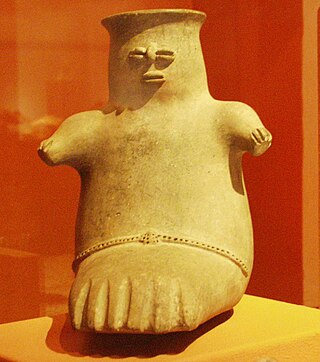
Chupícuaro is an important prehispanic archeological site from the late preclassical or formative period. The culture that takes its name from the site dates to 400 BC to 200 AD, or alternatively 500 BC to 300 AD., although some academics suggest an origin as early as 800 BC.

Ihuatzio is an archeological site located at the southern slopes of "Cerro Tariaqueri", just north of the Ihuatzio town, in the Tzintzuntzan municipality, of Michoacán state.
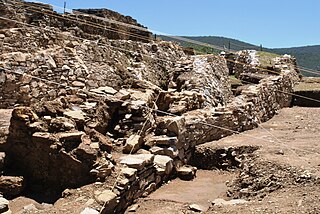
Ixcateopan is an archaeological site located in the town and municipality of Ixcateopan de Cuauhtémoc, 36 kilometers from Taxco, in the isolated and rugged mountains of the northern part of Guerrero state, Mexico.

The Mezcala culture is the name given to a Mesoamerican culture that was based in the Guerrero state of southwestern Mexico, in the upper Balsas River region. The culture is poorly understood but is believed to have developed during the Middle and Late Preclassic periods of Mesoamerican chronology, between 700 and 200 BC. The culture continued into the Classic period when it coexisted with the great metropolis of Teotihuacan.


